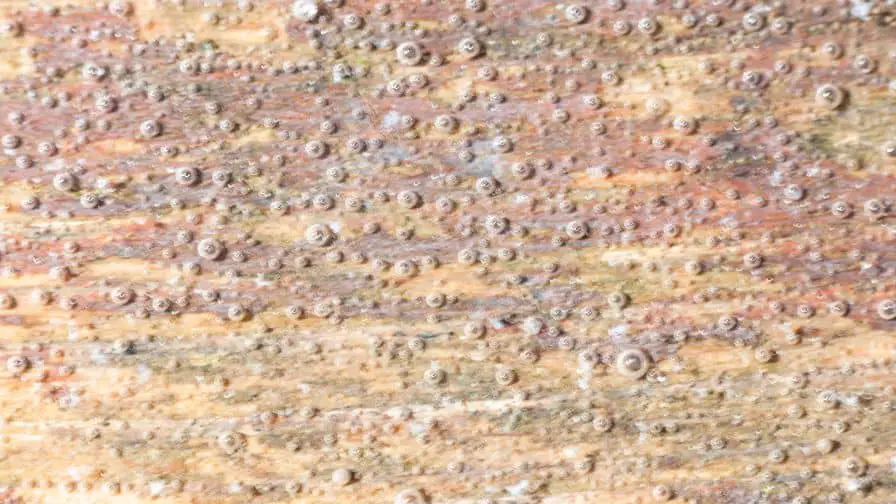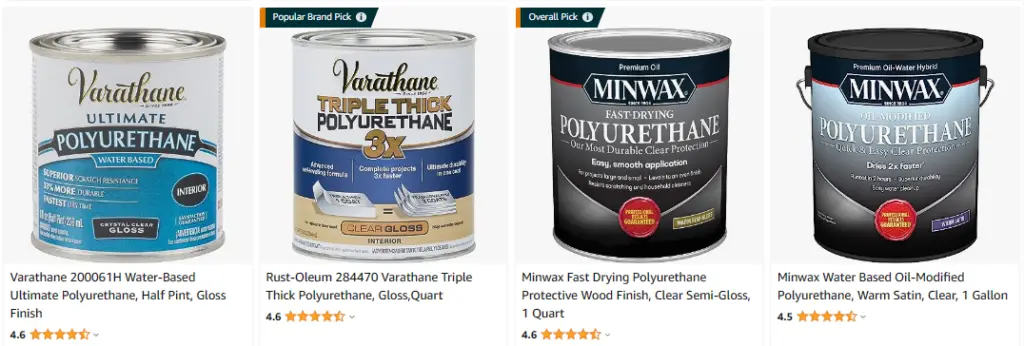
If you have ever used oil-based polyurethane to finish a piece of furniture, you know the importance of preventing bubbles. Bubbles will ruin the appearance of your finish, and they can be difficult to remove.
In this blog post, we will discuss how to prevent bubbles in oil-based polyurethane. We will also provide tips for removing bubbles if they do occur.

Click Here To Check The Pricing On Amazon
How To Prevent Bubbles In Oil-Based Polyurethane
When applying oil-based polyurethane or varnish, you can use mineral spirits (paint thinner) to “thin” the first coat. Thinners help prevent bubbles from forming in the finish.
Start by stirring the can of polyurethane or varnish thoroughly. Then, pour some of the finish into a separate container and add an equal amount of mineral spirits. Stir this mixture well and apply it to your project with a brush, roller, or pad.
After the first coat has dried completely, apply a second (unthinned) coat of finish. Bubbles should not be a problem with the second coat, but if you see any, sand them out and apply a third coat.
Now that you know how to prevent bubbles in oil-based polyurethane, get out there and finish that project! And remember, always follow the manufacturer’s instructions for best results.
Subscribe to paulsDIYsolutions on YouTube
What Are Bubbles In Oil-Based Polyurethane, And Why Are They A Problem?
Bubbles in oil-based polyurethane are caused by the outgassing of the solvents used to dissolve the resin. As the solvent evaporates, it leaves behind a void that is filled with air. This can cause all sorts of problems, including an uneven surface, poor adhesion, and blistering.
What Should You Do If Bubbles Do Form In Your Finish Coat?
If you find that bubbles have formed in your finish coat, don’t panic. To correct this, you’ll need to sand out the bubbles and re-apply the finish coat. This can be a time-consuming process, but it’s important to make sure that your finish coat is smooth and bubble-free. If you have any questions, be sure to ask a professional for help. With a little patience and effort, you can fix this problem and have a beautiful finished product.
How Can You Remove Bubbles From An Existing Finish Coat?
To remove bubbles from an existing finish coat start by lightly sanding the area with a fine-grit sandpaper. If this doesn’t work, you may need to remove and reapply the finish coat following the manufacturer’s instructions. In either case, be sure to clean and vacuum the area thoroughly before beginning any work.
Why Am I Getting Bubbles In My Polyurethane?
Bubbles can form in oil-based polyurethane for a couple of reasons.
The most common reason is shaking the can before you pour it out. When you do this, it creates bubbles in the polyurethane that will eventually rise to the surface and dry there. If you want to avoid this, pour the polyurethane into a separate container before applying it to your project.
Another common cause of bubbles is using a brush that hasn’t been properly prepped. When you dip your brush into the polyurethane, make sure to remove any excess from the bristles before applying it to the surface. If there’s too much on the brush, it can cause bubbles as well.



